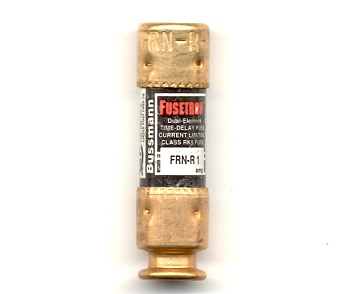Because of the difference of electrical utilization of fixtures, equipment, and machinery, fuses are manufactured in basically two time characteristic types; fast-acting and time-delay. With little or no inductive loads, such as motors and transformers, fast-acting fuses are better suited for incandescent lighting and general purpose use. Fast-acting fuses provide protection from short circuit and sustained overloads. Increasing the fast-acting fuse rating 200 to 300 percent of load current to compenstate for nusiance opening, because of in-rush currents from inductive loads, results in ineffective overload protection. A time-delay fuse would be better suited in this case.
High speed or very fast-acting fuses are used to protect solid state devices such as semiconductors or rectifiers.
Time-delay fuses are better suited for inductive loads, such as motors and transformers where high initial in-rush currents are experienced on startup. These fuses help to prevent unnecessary opening resulting in unproductive downtime. This can be a nuisance especially from a manufacturing standpoint with downtime and maintenance personnel costs, not to mention increased fuse replacement costs. Time-delay fuses offer the protection from short circuit and sustained overloads with the added benefit from opening because of harmless surge currents. Time-delay fuses also allow for downsizing the rating of fuses on most motor loads closer to 125 to 150 percent of motor full load current. This reduced fuse rating could possibly reduce fuse size and disconnect which could also reduce cost.

